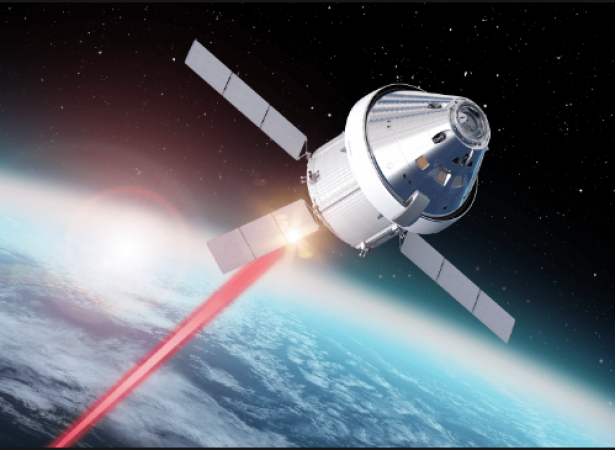
USA: Another big step in space communications has been achieved by NASA and its partners.A satellite in orbit and Earth were connected by the agency's most recent space-to-ground communications link, which provided a throughput of 200 gigabits per second.
According to NASA, this represents the "highest data rate ever achieved by optical communications technology."In other words, it will now be possible to transmit more data and have faster communications from space.
For space communications, NASA primarily uses radio, where the data transmission is comparable to how phones communicate with a cell tower.
The most recent laser communications' high-speed capabilities will enable the transmission of more data during transmissions from space
Also Read:. The US will engage Iran with fresh naval deployments
A quicker and more efficient communications system is essential given that NASA intends to establish a permanent presence on the Moon and send missions to Mars.
Due to laser communications, also known as optical communications, which "packs information into the oscillations of light waves in lasers, instead of using radio waves like most space communications systems," according to a blog post by NASA, the high data rates were made possible.
The TeraByte InfraRed Delivery (TBIRD) system, which was launched into orbit by NASA's Pathfinder Technology Demonstrator 3 (PTD-3) satellite, was used to establish the communications link.
The most recent communication link allows TBIRD to transmit several terabytes of data to Earth "during a single six-minute pass over a ground station." One terabyte is roughly equivalent to 500 hours of HD video for comparison's sake.
The team that used the TBIRD system in June 2022 to reach speeds of 100Gbps has now surpassed that mark.
We achieved a ground-breaking 100Gbps in June, and we've since doubled that data rate. The way we communicate in space will change as a result of this capability, according to Beth Keer, TBIRD's mission manager.
Imagine the power of space science instruments when they can be made to fully utilise improvements in detector speeds and sensitivity, enhancing what AI can do with massive amounts of data. The PTD-3 satellite maintains a "fixed" position with respect to the Sun while it is in the Earth's orbit.
Also Read:.Zelensky will visit the Vatican in Rome and meet with Pope Francis
As a result of its positioning, PTD-3 is able to "pass over the ground station on Earth at the same time twice each day so TBIRD can test this space-to-ground communications link."
TBIRD is about the size of a typical tissue box, whereas PTD-3 is about the size of two stacked cereal boxes